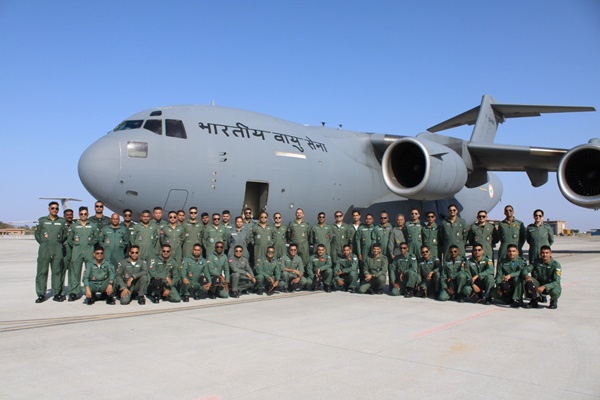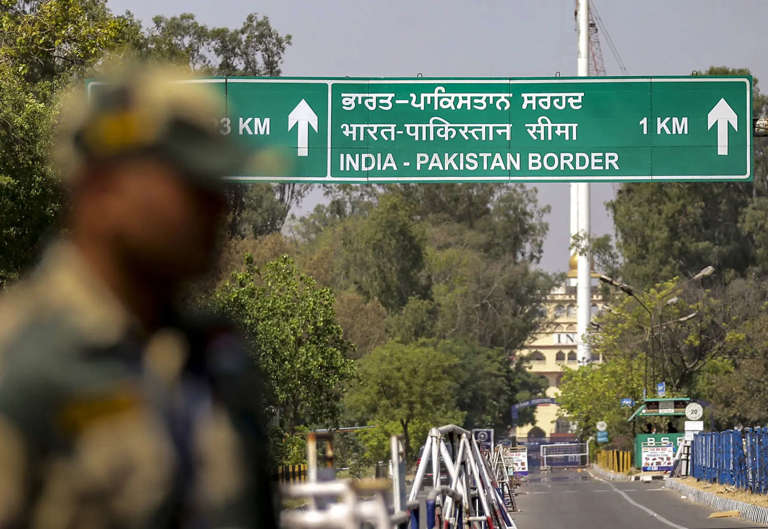GRIM YEAR FOR MALAYSIA AVIATION
Wed 31 Dec 2014
.jpg)
Wednesday, 31 December 2014 : Indonesian rescuers have recovered various bits of debris, including luggage, and seven bodies floating in shallow waters off Borneo.A sonar image showing a large, dark object on the sea bed is believed to be a missing AirAsia plane, an official with Indonesia's search and rescue agency said on Wednesday after bodies and debris were found in the area.Ships and planes have been scouring the Java Sea for Flight QZ8501 since Sunday, when it vanished with 162 people on board during bad weather about 40 minutes into its flight from the Indonesian city of Surabaya to Singapore."It's about 30 to 50 metres (100 to 165 feet) underwater," Hernanto, an official with the search and rescue agency, said of the sonar image.At least six bodies have been retrieved from the Java Sea off Indonesia where the ill-fated AirAsia plane carrying 162 people went down as rescuers were hampered by stormy weather today in their efforts to pull out the wreckage.Nearly three days after the AirAsia flight QZ8501 went off the radar, its debris was found on Tuesday in the Karimata Strait near Pangkalanbun, Central Kalimantan.Aviation experts believe that, weather permitting, the fuselage may be easily found by divers as the aircraft probably only broke up when it hit the water.Searchers found three bodies on Wednesday morning, including a flight attendant still wearing her AirAsia uniform, bringing the total to six so far, said the head of the search and rescue agency, Fransiskus Bambang Soelistyo.Fully clothed bodies could also indicate the plane was intact when it hit the water and support a theory that the Airbus A320-200 suffered an aerodynamic stall and plunged into the sea."The fact that the debris appears fairly contained suggests the aircraft broke up when it hit the water, rather than in the air," Neil Hansford, a former pilot and chairman of consultancy firm Strategic Aviation Solutions, said on Wednesday.Indonesia AirAsia Flight QZ8501 lost contact with air traffic control early on Sunday during bad weather on a flight from the Indonesian city of Surabaya to Singapore.The Airbus A320-200 was carrying 162 people, mostly Indonesians. No survivors have been found.Indonesian President Joko Widodo said his priority was getting bodies off the bottom of the Karimata Strait in the Java Sea, where rescuers retrieved a plane door and other debris on Tuesday, so victims could be identified."I feel a deep loss over this disaster and pray for the families to be given fortitude and strength," Widodo said in Surabaya on Tuesday after grim images of the scene in the Java Sea were broadcast on television.AirAsia Chief Executive Tony Fernandes, who has described the crash as his "worst nightmare", was rushing to Surabaya where relatives of the missing are gathered at a crisis centre in Indonesia's second largest city.Widodo said AirAsia would pay an immediate advance of money to the families, many of whom collapsed in grief when they saw the television pictures of debris.The navy initially said 40 bodies had been recovered, although other media later quoted the head of the search and rescue agency, Fransiskus Bambang Soelistyo, as saying only three
bodies had been retrieved.Dozens of Indonesian navy divers are expected to begin the underwater search at first light on Wednesday, a source close to the investigation said.The United States said its missile-guided destroyer USS Sampson and combat ship USS Fort Worth were awaiting instructions from the Indonesian search command on the recovery operation. Singapore said it was sending two underwater beacon detectors to try to pick up pings from the black boxes, which contain cockpit voice and flight data recorders.About 30 ships and 21 aircraft from Indonesia, Australia, Malaysia, Singapore, South Korea and the United States have been involved in the search.The plane, which did not issue a distress signal, disappeared after its pilot failed to get permission to fly higher to avoid bad weather because of heavy air traffic.It was travelling at 32,000 feet (9,753 metres) and had asked to fly at 38,000 feet. When air traffic controllers granted permission for a rise to 34,000 feet a few minutes later, they received no response from the aircraft.Online discussion among pilots has centred on unconfirmed secondary radar data from Malaysia that suggested the aircraft was climbing at a speed of 353 knots, about 100 knots too slow,and that it might have stalled. Investigators are focusing initially on whether the crew took too long to request permission to climb, or could have ascended on their own initiative earlier, said a source close to the probe, adding that poor weather could have played a part as well.A Qantas pilot with 25 years of experience flying in the region said the discovery of the debris field relatively close to the last known radar plot of the plane pointed to an aerodynamic stall, most likely due to bad weather. One possibility is that the plane's instruments iced up in a tropical thunderstorm, giving the pilots inaccurate readings.The lack of a distress call indicated the pilots may have realised too late they were in trouble and were too busy struggling to control the aircraft to issue a call, the Qantas pilot said.The Indonesian pilot, a former Air Force jet fighter pilot with 6,100 flying hours under his belt, was experienced and the plane last underwent maintenance in mid-November, said the airline, which is 49 percent owned by Malaysia-based budget carrier AirAsia.Three airline disasters involving Malaysian-affiliated carriers in less than a year have dented confidence in the country's aviation industry and spooked travellers across the region.Malaysian Airlines Flight MH370 went missing in March on a trip from Kuala Lumpur to Beijing with 239 passengers and crew and has not been found. On July 17, the same airline's Flight MH17 was shot down over Ukraine, killing all 298 people on board.In an additional incident, an AirAsia plane from Manila overshot the runway on landing at Kalibo in the central Philippines on Tuesday. No one was hurt.On board Flight QZ8501 were 155 Indonesians, three South Koreans, and one person each from Singapore, Malaysia and Britain. The co-pilot was FrenchThe AirAsia group, including affiliates in Thailand, the Philippines and India, had not suffered a crash since its Malaysian budget operations began in 2002.
bodies had been retrieved.Dozens of Indonesian navy divers are expected to begin the underwater search at first light on Wednesday, a source close to the investigation said.The United States said its missile-guided destroyer USS Sampson and combat ship USS Fort Worth were awaiting instructions from the Indonesian search command on the recovery operation. Singapore said it was sending two underwater beacon detectors to try to pick up pings from the black boxes, which contain cockpit voice and flight data recorders.About 30 ships and 21 aircraft from Indonesia, Australia, Malaysia, Singapore, South Korea and the United States have been involved in the search.The plane, which did not issue a distress signal, disappeared after its pilot failed to get permission to fly higher to avoid bad weather because of heavy air traffic.It was travelling at 32,000 feet (9,753 metres) and had asked to fly at 38,000 feet. When air traffic controllers granted permission for a rise to 34,000 feet a few minutes later, they received no response from the aircraft.Online discussion among pilots has centred on unconfirmed secondary radar data from Malaysia that suggested the aircraft was climbing at a speed of 353 knots, about 100 knots too slow,and that it might have stalled. Investigators are focusing initially on whether the crew took too long to request permission to climb, or could have ascended on their own initiative earlier, said a source close to the probe, adding that poor weather could have played a part as well.A Qantas pilot with 25 years of experience flying in the region said the discovery of the debris field relatively close to the last known radar plot of the plane pointed to an aerodynamic stall, most likely due to bad weather. One possibility is that the plane's instruments iced up in a tropical thunderstorm, giving the pilots inaccurate readings.The lack of a distress call indicated the pilots may have realised too late they were in trouble and were too busy struggling to control the aircraft to issue a call, the Qantas pilot said.The Indonesian pilot, a former Air Force jet fighter pilot with 6,100 flying hours under his belt, was experienced and the plane last underwent maintenance in mid-November, said the airline, which is 49 percent owned by Malaysia-based budget carrier AirAsia.Three airline disasters involving Malaysian-affiliated carriers in less than a year have dented confidence in the country's aviation industry and spooked travellers across the region.Malaysian Airlines Flight MH370 went missing in March on a trip from Kuala Lumpur to Beijing with 239 passengers and crew and has not been found. On July 17, the same airline's Flight MH17 was shot down over Ukraine, killing all 298 people on board.In an additional incident, an AirAsia plane from Manila overshot the runway on landing at Kalibo in the central Philippines on Tuesday. No one was hurt.On board Flight QZ8501 were 155 Indonesians, three South Koreans, and one person each from Singapore, Malaysia and Britain. The co-pilot was FrenchThe AirAsia group, including affiliates in Thailand, the Philippines and India, had not suffered a crash since its Malaysian budget operations began in 2002.
No Comments For This Post, Be first to write a Comment.
Most viewed from Specials
Most viewed from World
AIMIM News
Latest Urdu News
Most Viewed
May 26, 2020
Do you think Canada-India relations will improve under New PM Mark Carney?
Latest Videos View All
Like Us
Home
About Us
Advertise With Us
All Polls
Epaper Archives
Privacy Policy
Contact Us
Download Etemaad App
© 2025 Etemaad Daily News, All Rights Reserved.













.jpg)
.jpg)
.jpg)
.jpg)
.jpg)
.jpg)

.jpg)
.jpg)




















